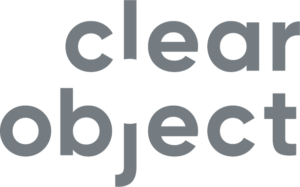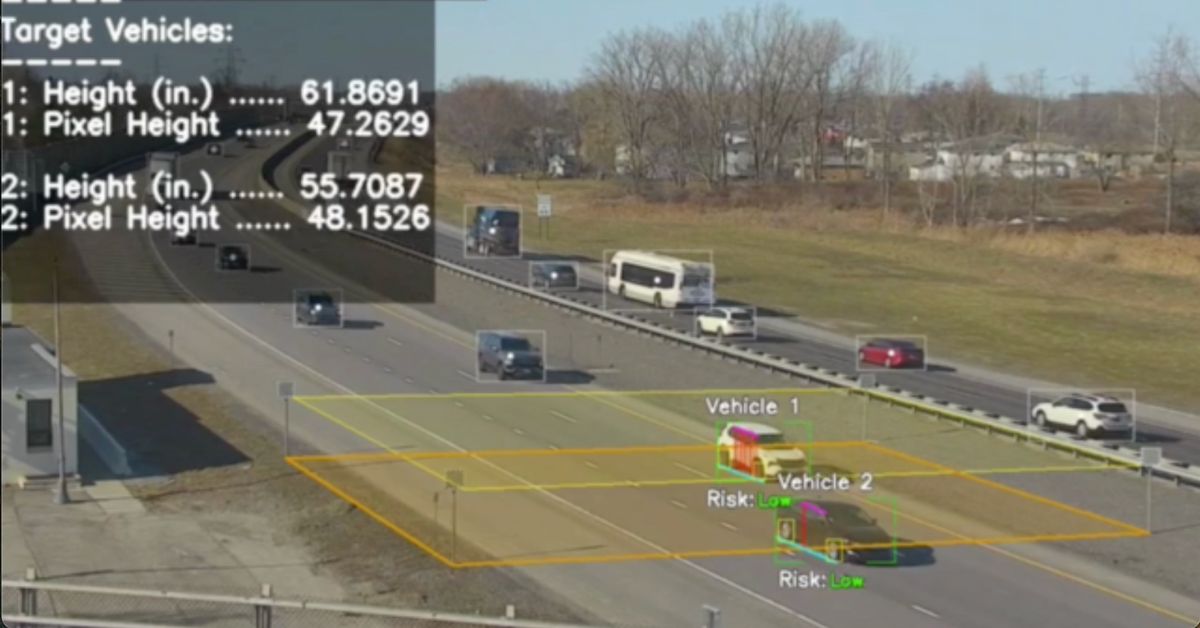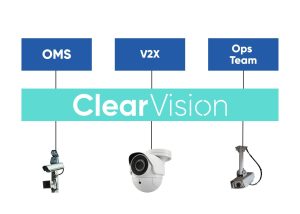Cities and transportation agencies across the country face recurring challenges from over-height vehicles striking bridges, tunnels, overpasses, and other low-clearance infrastructure. These incidents impose costs on public safety, infrastructure repair, operations, and traffic flow.
The Costs and Risks of Bridge Strikes
Here are some illustrative facts and stories:
- In New York State, bridges suffer approximately 200 strikes each year by over-height trucks.[1]
- Since 2015, New York has recorded more than 1,100 bridge strikes.[2]
- Nationally, the number of vehicle–bridge collisions has ranged from about 13,000 to 18,000 per year (2013–2018) according to FHWA and related studies.[3]
- Some individual bridges suffer repeated hits. For example, the King Street bridge in Rye Brook, NY, has been struck over 100 times in the past decade.[4]
In addition to structural damage, strikes can lead to traffic disruption, vehicle damage, injury to drivers or bystanders, and legal liabilities. Some incidents even involve collisions with overhead utilities, tunnels, clearance signs, or can cause secondary crashes from sudden braking or lane changes.
Beyond bridges, over-height vehicle detection is applicable in other contexts:
- Tunnel approaches or underground parking garages with vertical limits
- Pedestrian overpasses, pedestrian bridges, or footbridges
- Rail overpasses on more minor roads
- Infrastructure, like canopies, underpasses, or pedestrian walkways in airports or campuses
- Temporary work zones, where height restrictions are imposed (e.g. crane or scaffolding over a roadway)
In each of these cases, an over-height vehicle not anticipated by signage or routing can cause severe structural or operational damage.
Given these risks and the frequency of incidents, transportation agencies and municipalities are increasingly seeking proactive technologies to detect and mitigate over-height vehicle threats before collisions occur.
Traditional and Sensor-Based Approaches to OverHeight Vehicle Detection
- Contact or sacrificial bars / “tattle-tales”
Simple mechanical chains or bars are positioned in front of a low-clearance structure. If struck, they alert the driver (with noise or vibration) to stop. These are inexpensive but limited: they can be bypassed, ignored, or damaged.
- Infrared / laser / light-beam sensors
Infrared or laser beams are set at a threshold height. When broken, they trigger warnings (lights, signage). More reliable than mechanical bars, but can be subject to false triggers (birds, debris) and require careful calibration and maintenance.
- Radar / millimeter-wave sensors
High-frequency radar sensors (e.g., 77 GHz) can measure the “height” profile of passing vehicles and trigger an alarm if a vehicle exceeds a threshold.
For example, some over-height detection systems (OHD) marketed by sensor system vendors use variants of radar or microwave to detect vehicle height.
- LIDAR / 3D scanning
3D LiDAR or scanning sensors can collect a spatial point cloud and measure the vertical envelope of a vehicle to detect height violations. These can be very accurate but often come with higher costs, increased complexity, and additional data processing overhead.
- Onboard systems / smart GPS routing
Some trucks and commercial vehicles employ onboard systems or GPS routing software (with embedded low-clearance bridge databases) that warn drivers of upcoming height-restricted structures.
A more advanced approach is to have direct communication between infrastructure sensors (e.g., over-height detectors) and onboard vehicle systems to trigger warnings or even preemptive braking.
- Integrated traffic signals/barrier gating
In high-risk zones (e.g., tunnel approaches), over-height detectors are connected to traffic signal or gate control systems to stop traffic, preventing over-height vehicles from entering the restricted zone.
These proven technologies reduce incidents, but many still rely on point sensors or discrete beams, and may struggle with false alarms, maintenance needs, or adaptability.
Vision AI and Camera-Based Vehicle Height Detection
In recent years, advances in computer vision, deep learning, and image-based calibration have enabled new forms of over-height detection using camera systems:
- Researchers have proposed AI-based overheight vehicle warning systems using long-range cameras to detect over-height vehicles from a safe stopping distance. The system classifies the height status of incoming vehicles relative to known thresholds and triggers alerts.
- Because these systems use cameras, they can be integrated with existing CCTV infrastructure (rather than installing new sensors), reducing hardware overhead.
- Some commercial offerings—e.g., leveraging AI apps or computer vision platforms—claim reductions in over-height incident counts by monitoring restricted zones, issuing alerts, and analyzing trends.
- Vision-based solutions can also fuse multi-camera views, depth cues, perspective geometry, or stereoscopic imagery to estimate vehicle height and distance dynamically—improving robustness over simpler single-beam triggers.
These AI-based vision systems hold promise in offering scalable, extensible, and upgradeable capabilities. But implementation must navigate calibration, false positives, real-time latency, and integration with control systems.
ClearHeight: ClearVision Vehicle-Height Detection
At ClearObject, we built ClearVision as a modular Vision AI platform that can overlay intelligent detection capabilities on top of existing camera infrastructure. One compelling application is vehicle height detection and over-height alerting—a tool to proactively prevent bridge strikes and related incidents.
ClearObject’s NY Thruway Authority Collaboration
We have partnered with the New York State Thruway Authority to deploy a version of ClearVision that monitors over-height threats at select structures. You can watch the deployment story and results in this video:
In that deployment, ClearVision:
- Analyzed video feeds from existing cameras already monitoring the roadway
- Calibrated each camera’s field of view, horizon, and perspective geometry to map pixel measurements to real-world height estimates accurately
- Established threshold zones and detection logic so that an approaching vehicle is evaluated in real time
- Generated emergency alerts, via operator dashboards, SMS/email alerts, or control center integration—whenever a vehicle appears to exceed the allowable height
- Sent metadata and events to a centralized dashboard for analytics, incident tracking, and trend detection
Because ClearVision works as a software overlay on existing video feeds, the infrastructure cost is often limited to installation-specific calibration and configuration (rather than full sensor deployment).
Calibration, Integration, and Workflows
Key implementation considerations and features of ClearVision for height detection include:
- Camera calibration: For each viewpoint, we perform geometric calibration (intrinsic and extrinsic parameters) so that the system can relate image measurements (e.g. bounding box top in pixels) to actual height at given distances. This calibration is critical for reducing false alarms or misreadings in varying lighting or perspective conditions.
- Distance estimation: The system must estimate how far a vehicle is from the camera and adjust for perspective foreshortening. Often this is done via road-plane modeling or homography.
- Dynamic thresholding: Some bridges or tunnels have non-uniform clearance (sloped or varying elevation). ClearVision allows custom thresholds per lane or segment.
- Alerting integration: Upon detection, alerts may feed into traffic management centers, variable message signs (VMS), signal control, or even interface with gating/traffic light systems.
- Dashboard and analytics: All detection events are logged and can be reviewed via dashboards. Trends, false-alarm rates, heat maps, and performance metrics are exposed.
- Feedback loop & continuous improvement: One key design principle is iterative learning. Over time, ClearVision refines its detection models and thresholds based on confirmed events, operator feedback, and evolving conditions (e.g. sensor drift, new construction). This feedback loop allows the system to adapt without manual retraining from scratch each time.
- Scalability and extensibility: Once a baseline deployment is validated, ClearVision can be scaled to other bridges, overpasses, tunnels, or restricted zones, leveraging the same software foundation and camera calibration methodology.
Why ClearVision Makes Sense for Municipal and SLED Agencies
- It leverages existing cameras, reducing hardware duplication.
- It offers modular deployment per site, with calibration tailored to each structure.
- It supports real-time alerts + dashboards for operational visibility.
- It enables continuous improvement, ensuring detection quality improves over time
- It can integrate with existing traffic operations, control rooms, or signage infrastructure.
By continuously applying updated insights and refining its detection models, ClearVision becomes smarter and more reliable over time—effectively learning from new data to anticipate and prevent height-violation incidents before they occur.
If you would like to explore how ClearVision could be applied in your city, state, or agency, please reach out to us. Contact ClearObject.
Learn More: Download the PDF
SOURCES
1 – “Strikes on Low Clearance Bridges by Over-Height Trucks in New York State,” City College of New York, U.S. Department of Transportation, Jan 2013.
2 – “Governor Cuomo Announces New Efforts to Increase Highway Safety and Prevent Low-Bridge Strikes by Trucks,” NY Thruway Authority Press Release, Nov 9, 2020.
3 – “Case Study: Response to Bridge Impacts – An Overview of State Practices” FHWA-HIF-20-087, Federal Highway Administration, Sept 2020.
4 – “Strikes on Low Clearance Bridges by Over-Height Trucks in New York State” City College of New York, UTC Spotlight: University of Transportation Centers Program, U.S. Department of Transportation, Jan 2013.


